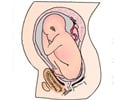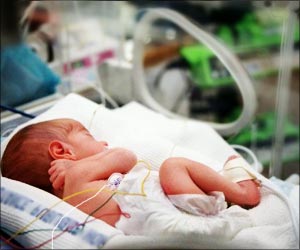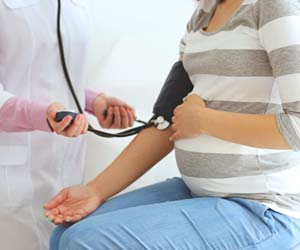Pregnant women from Sub-Saharan Africa with human immunodeficiency virus (HIV) and malaria have a higher prevalence of anemia than pregnant women without infections, finds a new study.

‘Anemia is a condition where the body lacks enough healthy red blood cells to carry sufficient oxygen to body tissue, resulting in fatigue. Diseases such as HIV and malaria can destroy red blood cells and cause a person to become anemic.
’
Read More..




Coinfections of HIV and malaria are common among expectant mothers in sub-Saharan Africa. Dr. Paddy Ssentongo, a Ph.D. student in epidemiology, assessed the association of malaria with anemia and the effects of malaria and HIV on anemia in pregnant women. Read More..
The researchers analyzed demographic and health surveys from 2012 and 2017 across seven countries in sub-Saharan Africa and examined blood samples from 947 pregnant women, ages 15 to 49 years old. Their results show that malaria was associated with an increased prevalence of anemia during pregnancy. The prevalence of anemia was higher in pregnant women with malaria and HIV coinfections (60%) than in pregnant women without infections (45%).
“Multipronged strategies to prevent and treat malaria and HIV in pregnant women are critical to ensure the survival of mothers and their unborn babies.”
The interaction between malaria and HIV leading to anemia in dually-infected patients is synergistic and bidirectional. Malaria leads to an increase in HIV viral load, a decline in the level of immune cells, and an increase in inflammation. In addition, malaria increases the rate of disease progression from HIV to AIDS. HIV contributes to more frequent and more severe cases of malaria and increases the density of malaria parasites, which leads to either the destruction of the red blood cells, reduced iron absorption or reduced rate of formation of new red blood cells in the bone marrow.
According to the researchers, preventative strategies for anemia in pregnancy due to malaria and HIV include the use of trimethoprim-sulfamethoxazole (co-trimoxazole), a prophylactic malaria treatment, in addition to antiretroviral therapy, which both lowers the odds of coinfection. In addition, vector control using insecticide-treated bed nets and residual spraying is effective. Although intermittent preventive treatment with sulfadoxine/pyrimethamine has been shown to be effective in parts of Africa, intermittent preventive treatment should be avoided in pregnant women, who are on antiretroviral therapy and co-trimoxazole prophylaxis, because of the risk of adverse drug reactions.
Advertisement















